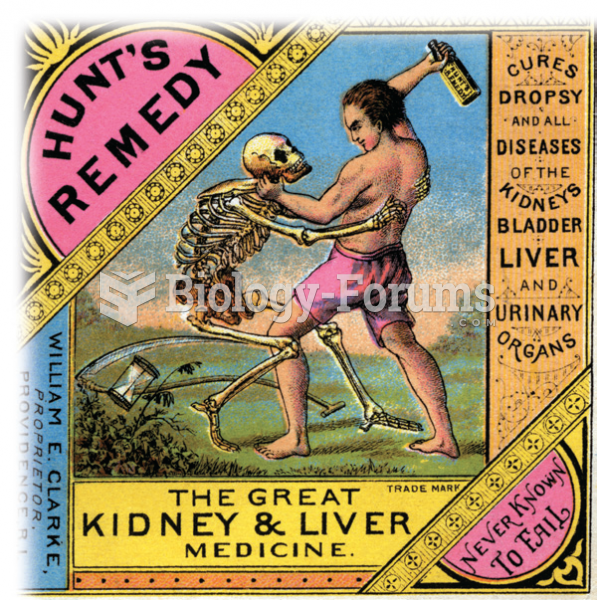|
|
|
Many people have small pouches in their colons that bulge outward through weak spots. Each pouch is called a diverticulum. About 10% of Americans older than age 40 years have diverticulosis, which, when the pouches become infected or inflamed, is called diverticulitis. The main cause of diverticular disease is a low-fiber diet.
Elderly adults are living longer, and causes of death are shifting. At the same time, autopsy rates are at or near their lowest in history.
The largest baby ever born weighed more than 23 pounds but died just 11 hours after his birth in 1879. The largest surviving baby was born in October 2009 in Sumatra, Indonesia, and weighed an astounding 19.2 pounds at birth.
Cancer has been around as long as humankind, but only in the second half of the twentieth century did the number of cancer cases explode.
All adults should have their cholesterol levels checked once every 5 years. During 2009–2010, 69.4% of Americans age 20 and older reported having their cholesterol checked within the last five years.
 The ovaries. In addition to producing ova, the ovaries secrete the female sex hormones, estrogen and
The ovaries. In addition to producing ova, the ovaries secrete the female sex hormones, estrogen and
 This advertisement from about 1885 represents an early stage of capitalism when individuals were ...
This advertisement from about 1885 represents an early stage of capitalism when individuals were ...





